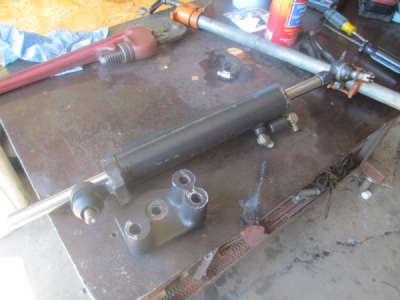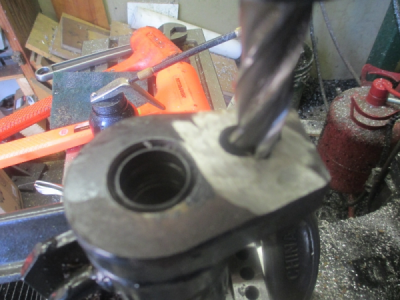My neighbor broke one of the rod ends on the steering cylinder on his Massey-Ferguson tractor. The only replacement part available is the complete cylinder assembly for big $$$$.

He found another rod end that had the same taper dimensions and would kinda work so I get the task making it work. I need to get the tractor back on line anyway because I need to use it to finish getting through my jungle of a back yard.

This picture was taken after I cut the broken part of of the cylinder and had the cylinder set up in the mill. I just used the band saw to cut through the weld and then just ground off what was left. The reason it is in the mill is that the rod end has a female thread, rather than the normal male thread, so I have to increase the size and move the locating pocket in the cylinder tab.
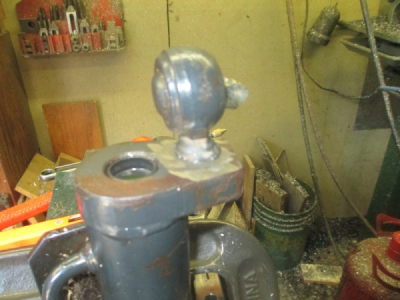
I didn't have much height clearance so the cylinder needed to sit on the table. The good news i that I have a precision machinists vice to grab the cylinder. I could have used an angle plate and lashed up something also. I could have even run a bolt down through the cylinder and secured it right to the T-slots.
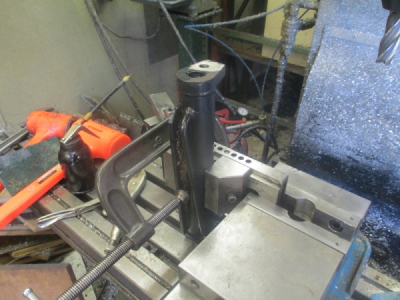
And another view of the setup. The mill vice holds one side just fine, but I couldn't just leave it hanging out in space, so clamped and supported on the other end. The clamp is pretty much centered over the jack screw.
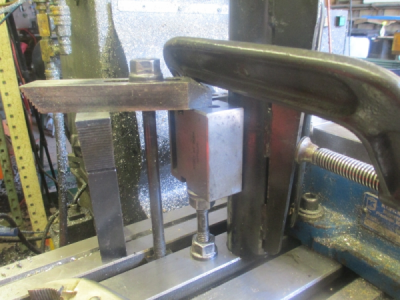
I chucked up the new rod end and just took enough off to get a round surface. Size didn't matter, just round (ish) It came out at 0.7165. A lot of tool hang out to clear the taper.

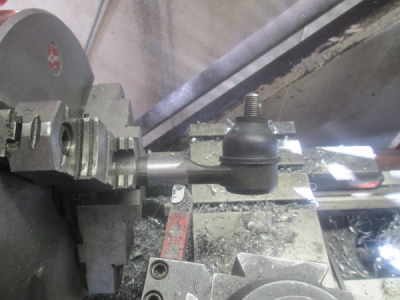
And kinda in place, but a tad long. I'll fix that later.
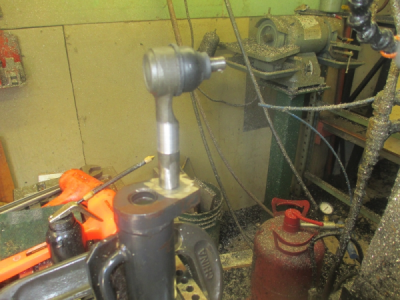
So now to bore and move the hole over. I am going to go through so it needs to be moved about 0.090 away from the cylinder tube and bored to 0.716 to get a light press fit.
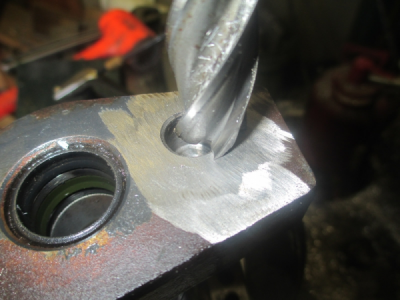
I thought I was going to rough out the hole with a 0.625 end mill, but the the tab had other ideas. The weld area was a bit on the hard side and it just laughed at my HSS end mill.

OK, time for the big guns, CARBIDE. I just ran a pocket routine and machined the bore, came out perfect on the first try. Didn't have to make a spring cut.
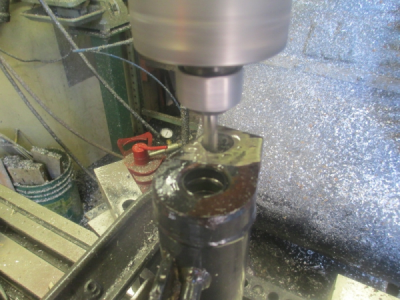
OK, time to trim the rod end using my junk import vertical band saw, complete with HF blade. A couple of aluminum scraps to support the part while cutting.
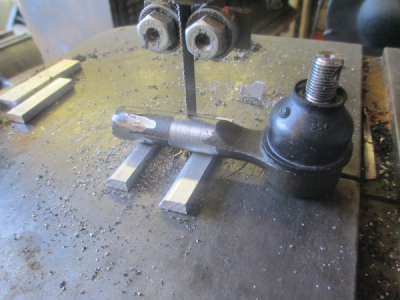
So once cut off I welded it in place. 3/32 7018 rod, 95 amps DC reverse. I put stainless steel tape over the rod hole and over the taper on the rod end.
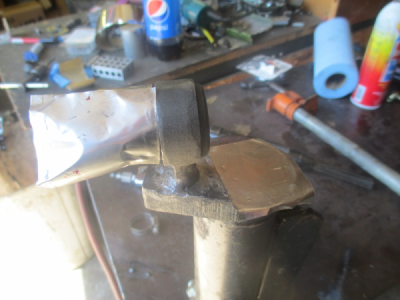
And the back side. That weld is not as ugly as it looks, the center of the rod end is hollow. My HF needle scaler in the back ground, actually has worked pretty good for a number of years.
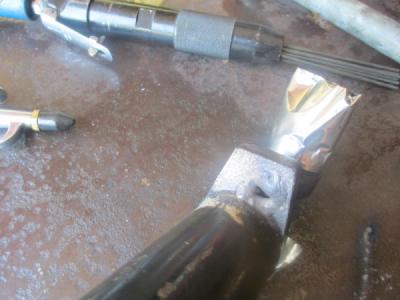
I had to be really careful not to let things get too hot. I was worried about the seal in the cylinder. No way to get it out without destroying it. So weld a bit then blow air, let it cool down, rinse repeat. The seal never got over about 140° F
Then on reassembly I found the cylinder rod was bent, had about 0.250 TIR bend in it

. So over to the press and get it more or less straight.
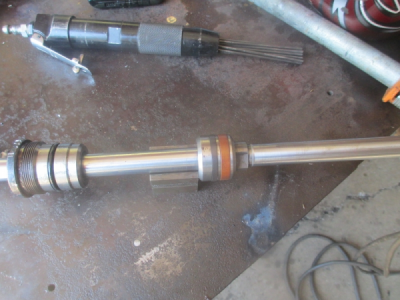
And the finished assembly ready to install. This is going to cost the neighbor a couple of his grilled hamburgers, each one is about two meals for me.

I work for food!

